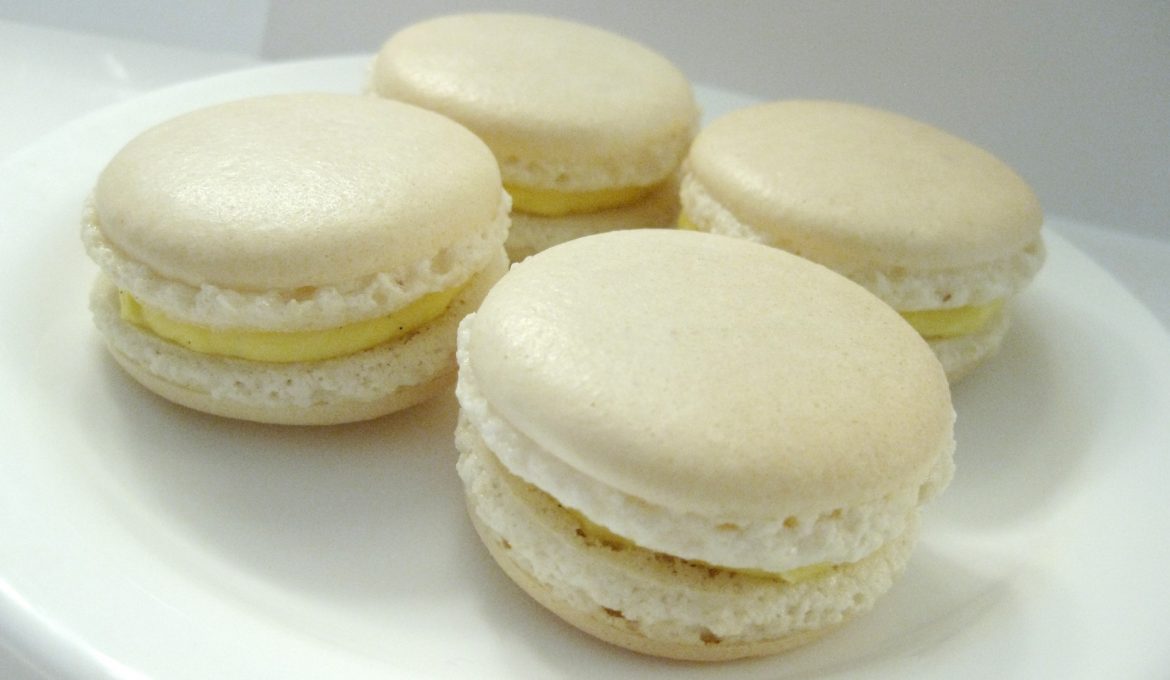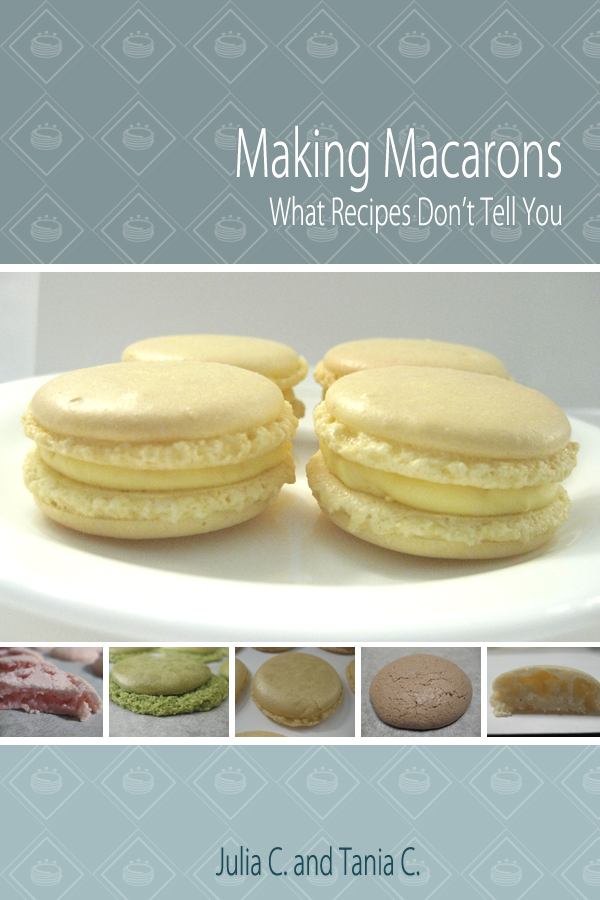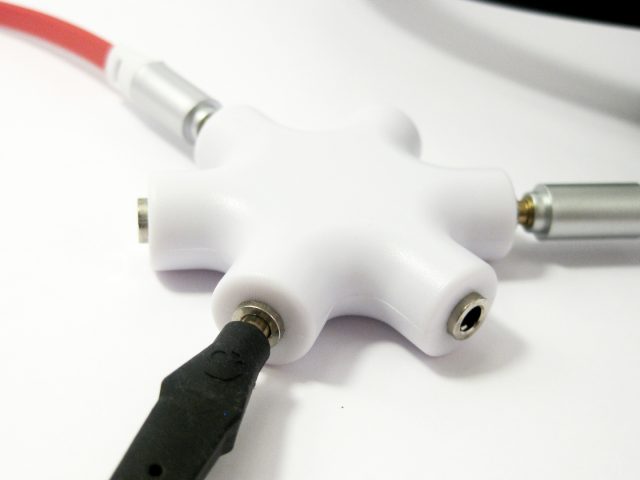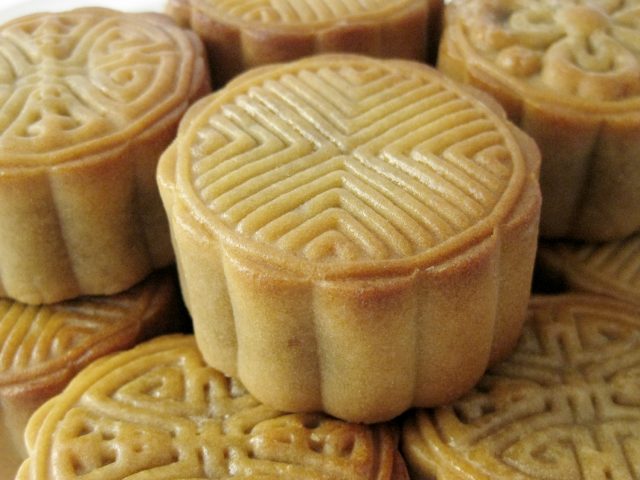We’ve gotten onto the train of macaron making (several years late from the hype, we know!) and we decided that our next challenge is to turn out a batch of these French cookies. We’re by no means professional bakers, but we like to think that we can churn out a pretty good batch of baked goods if we studied up enough on the recipe and technique.
We were told that these macarons were tasty, but tasty things comes with a price: they are extremely hard to make! Get the technique wrong or miss a step, it means you get unsightly, wrinkly disks instead of the cute domes with the beautiful, characteristic frilly feet, a glossy shell and light interior. So, we went on our way and studied up on macarons like we were trying to ace university exams. We processed the information and soaked it all in. Then, confident we had equipped ourselves with enough knowledge, obtained the equipment and the right ingredients, we set about making them.
Our first attempt was on a day that snowed. Outside was a winter wonderland with snow 5cm high (not deep at all—no. Still, it was enough to keep us indoors for a good part of the day) with a harsh -10°C windchill at one point. We could see our breath indoors!—that was how cold it was.
It has been said that one shouldn’t bake macarons on a wet day. They were right. Although the day may not have been wet; the air in the kitchen was definitely damp. It was not good! Our macarons came out flat, feetless, heavy looking and cracked. They resembled small gingernut biscuits than macarons. We didn’t think it was our technique. The batter had looked right, flowing like the online videos that we had watched before starting. And we didn’t think it was our measuring nor did we think it was our equipment: we had a digital weigh, a good bowl and rubber spatula for mixing, and we had thick baking sheets to cook the macarons on. We can only put the poor result down to baking on a cold and wet day like many have warned not to do! But we were so excited and had to start!
So, we set out to pick a warmer, drier day and gave even more care to following the steps of the recipe. We failed this time, too. Like a lot of others who were new to making macarons, we were sad to see yet another batch of failed macarons and was left to wonder if it was our technique, and not the humidity we blamed for our initial failure. We went off and did further research to study the technique again as well as find out other possible causes and began again the next day based on our findings.
Unlike the last two times where we placed all of the macarons in the oven, this time we placed one to two macarons into the oven at a time. We began the elimination process of possible causes. We tested various temperature settings, tray placements and suggested techniques. And one after the other, it came out badly, producing flat disks, burnt disks, translucent disks, sticky disks and uncooked disks.
We went on another research period. This time, we researched not only information relating to the cause of failed macaron batches again, but also the effects the environment has on our baking, how ovens and their different layout can affect our results and the way these particular ingredients in the macaron recipes interact with each other. We applied the new knowledge to our baking, testing one macaron in the oven at a time as we again went through the elimination process of possible reasons for failure to produce a pretty macaron. One by one, they came out failures. With only six uncooked macarons left on the countertop, we began thinking that maybe getting these beautiful dome-shaped cookies to appear in our oven window was beyond our skills. We looked at the countertop full of macarons-gone-wrong then to the six uncooked macarons: “What should we do? We wasted enough electricity testing, as well as eggs, sugar and ground almonds in the last several days. Give up? Throw them out?”. We decided to chuck in the oven the last six macarons. We figured we would cook them, have them fail and then call it quits—at least for a while. Enough was enough.
It’s funny when you think you’ve lost all hope of succeeding, something happens. Through the oven window, we see what we had failed to see and wanted so bad to see. We saw feet! The shell was lifting off the baking paper like it should and developing feet! It was not high—only a couple millimetres—but it was results. Good results! After seeing this, we discussed a little about why these produced feet and why the others previous hadn’t. We slowly came to a sort of an understanding to what it took to get these little cute dome-shaped cookies to come out right.
Excited, we made a fresh batch of batter the very next day. We piped them and put them in the oven. We waited and stared with hope and anticipation. In the first minute, little happened—nothing in fact. By the second minute, we had feet—much higher than the day before! Feet, the very feature that makes a macaron a macaron; and it developed by the second minute! A recipe had informed us that this would happen between the 5th and 6th minute, so for it to happen on the second minute, this was quite a surprise. We were aware that they can develop feet within the first and second minutes, but we didn’t think ours would.
This was very exciting!
We continued to watch the progress of the cookies through the oven window. We watched them have shells that remained smooth and strong, and continued to rise and develop feet to a good height. At the end of the baking time, we had macarons!
By George, we got it! We had figured it out!

To share our success, in the coming weeks, we will be posting our experience and what we learned in installments. For those of you out there who love macarons and wish to try making them yourselves, because 1) you think they are just delicious, and 2) they cost a whole heap to buy from patisseries and you don’t want to break your wallet funding your love for them! We hope our installments will give you some insight into what you might need to do to get good macarons to appear in your oven window. The installments will cover the equipment we use, the recipe we found that works, our findings on what might have caused the failed attempts, environmental factors and any adjustments we have made to achieve the macarons.
We hope you join us on our journey to making the perfect macaron!
See our other posts in Macarons, Quest for Perfection blog series:
Macarons, Quest for Perfection – Technique, Macaronnage
Macarons, Quest for Perfection – Drying Time
Macarons, Quest for Perfection – Oven
Macarons, Quest for Perfection – Italian Meringue Method vs. French Meringue Method
ADVERTISEMENT






